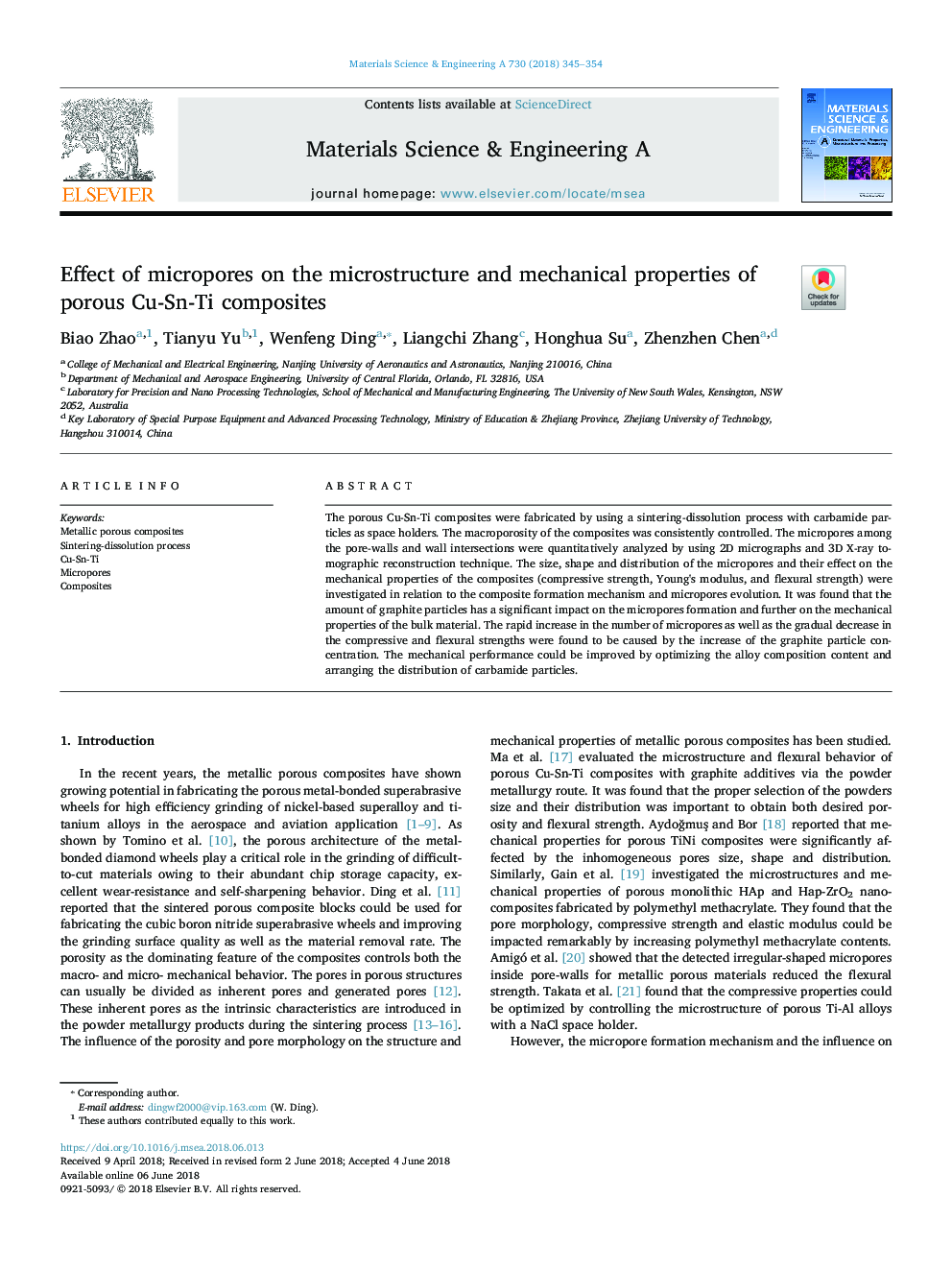| Article ID | Journal | Published Year | Pages | File Type |
|---|---|---|---|---|
| 7971815 | Materials Science and Engineering: A | 2018 | 10 Pages |
Abstract
The porous Cu-Sn-Ti composites were fabricated by using a sintering-dissolution process with carbamide particles as space holders. The macroporosity of the composites was consistently controlled. The micropores among the pore-walls and wall intersections were quantitatively analyzed by using 2D micrographs and 3D X-ray tomographic reconstruction technique. The size, shape and distribution of the micropores and their effect on the mechanical properties of the composites (compressive strength, Young's modulus, and flexural strength) were investigated in relation to the composite formation mechanism and micropores evolution. It was found that the amount of graphite particles has a significant impact on the micropores formation and further on the mechanical properties of the bulk material. The rapid increase in the number of micropores as well as the gradual decrease in the compressive and flexural strengths were found to be caused by the increase of the graphite particle concentration. The mechanical performance could be improved by optimizing the alloy composition content and arranging the distribution of carbamide particles.
Keywords
Related Topics
Physical Sciences and Engineering
Materials Science
Materials Science (General)
Authors
Biao Zhao, Tianyu Yu, Wenfeng Ding, Liangchi Zhang, Honghua Su, Zhenzhen Chen,
